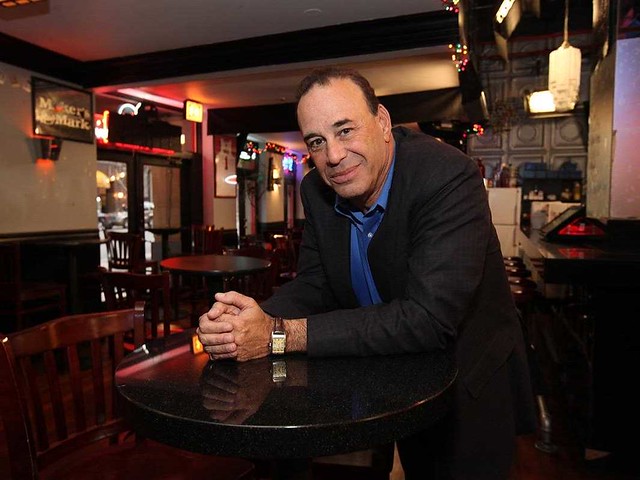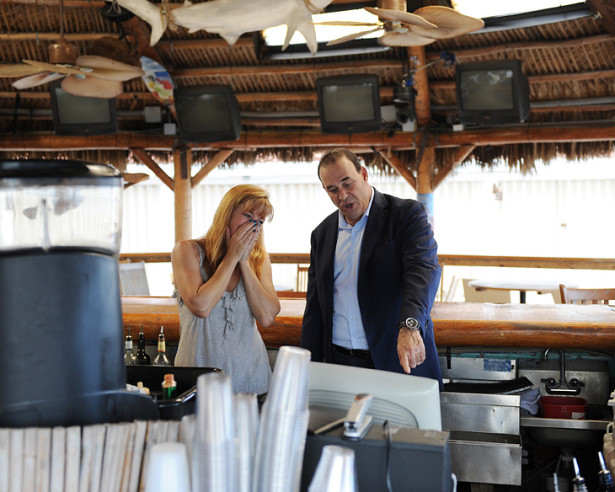5 Things Training Professionals Can Learn From Watching "Bar Rescue"
Add bookmark"Bar Rescue" is a makeover/reality show that airs on Spike, and follows bar industry specialist Jon Taffer as he renovates and rescues failing bar establishments across the U.S. What I find interesting about the show is that many techniques and processes Taffer offers (minus the drama, of course) mirror important techniques for training professionals. Here are five things training professionals can learn from watching "Bar Rescue."
1. Find Out If Training Is Needed

At the beginning of every "Bar Rescue" episode, Jon Taffer and his guests scope out a bar from an undisclosed vehicle. They observe the activities in the bar using monitors connected to hidden cameras. Most of the time, Jon is invited by a member of the bar staff to "rescue" the establishment from demise. During these opening scenes, Jon and the gang analyze why the bar has low performance. Usually there isn’t a problem with location or local demographics. Although bad management is typically the issue, many times service is underperforming due to lack of training. This leads to rude bartenders, unsavory cocktails, horrible food, and a disgusting facility. As a solution, Jon invites notable mixologists and chefs to train the staff while Jon himself coaches management.
Training is one of the most expensive business solutions. Not only does training carry the cost of project managers, instructional designers, subject matter experts, developers, facilitators and training coordinators, it also bears the cost of employees’ time to take the training. If a bad training solution is deployed to every employee in a large-scale global organization, it can get pretty expensive. As training professionals, our number one priority before designing a training program is to make sure training is needed. Omitting the needs analysis process increases the risk of a failed training program since training may not even be needed in the first place. Is low performance caused by bad processes? Bad systems? Bad tools? Bad communication? Bad recruiting? If not, maybe training is a viable solution.
2. Test Then Tell

One of the first items of Jon’s training agenda is to have his guest bartender or mixologist evaluate the level of competency of a bar’s bartenders. Bartenders are evaluated based on their knowledge of drink ingredients, shot pouring, and speed. More often bartenders don’t perform because they’ve never been trained to be bartenders in the first place. A short but rigorous training experience is concocted by one of Jon’s experts to prepare the lackluster bartenders for a "stress test," which I’ll discuss later.
While designing training programs, it’s important to evaluate the competencies of the learners before diving deep into a lesson. A one-size-fits-all approach may not always work. By developing a more personalized learning experience, learners can be given the right amount of challenge and motivation to perform. During each bar rescue, bartenders demonstrate their current ability and their trainer is able to shift focus based on where the biggest gaps are.
3. Practice, Practice, Practice
The most important element of training is practice. In "Bar Rescue," bartenders are asked to practice making newly learned drinks over and over before doors open to a new bar crowd.
It’s incredible how many training programs I’ve experienced, both in a classroom or online, that forgo comprehensive practical experience. Applying and practicing new skills allows room for mistakes and improvement before those skills are applied in the real world. When designing training programs, you should invest more time for practice over content or presentation.
4. Training Must Be Measured

As the old adage goes, "If it can’t be measured, it can’t be improved." Jon Taffer measures key aspects of each bar to ensure its success: performance of the bartenders, kitchen staff, management, and also the quality of the facilities. These items are measured both before and after the bar has been rescued.
In order to know that a training program is successful, performance of the learners must be measured before and after a training intervention. Training can’t be measured merely by smile sheets or evaluation of a single learning experience. Training can provide value only when learners can demonstrate improved performance or behavior on the job.
Taffer initially measures the competency of the bar staff in a scenario he calls the "stress test." This is where he invites a couple hundred customers to enter the bar before any improvements have been made so that the staff’s performance can be measured under stress. Once staff is officially trained, he observes their performance during a grand reopening comparatively against the initial stress test.
The show’s ultimate metric is an increase of revenue after each rescue, but not all metrics need to be profit-driven. Metrics can span any performance-based result, whether it be customer satisfaction, higher productivity, reduced project timelines, reduction of errors, or employee satisfaction. It’s important to define exactly what will be measured following a training intervention in order to exhibit success and value in your program.
5. Failure Leads To Success

Jon Taffer stated in his Reddit AMA, "First-time bar owners sometimes run out of money before they learn how to make it profitable." Some of the biggest successes on "Bar Rescue" come from the biggest challenges: bad management, untrained staff, unsanitary work environments, bad market targeting, bad relationships, bad investments, etc. The values Jon and the "Bar Rescue" staff add to the establishments are the right constructive feedback and the right lessons to provide a transformative learning experience.
Sometimes we as training professionals are hesitant to want our learners to make mistakes. Sometimes seeing our learners fail makes us feel less competent as training professionals. That’s okay. Making mistakes or failing provides a great opportunity to provide learners constructive feedback, allowing them the room to correct themselves and learn from those experiences. Through applying new skills, making mistakes, providing feedback, and practicing, learning experiences are enhanced through a series of "ah-ha" moments and course-correction.
It’s our job as learning professionals to accelerate the time it takes for learners to make those mistakes and be given constructive feedback, so that those mistakes can be made in a controlled environment rather than on the job. As Taffer likes to say, "Own your failure and you will own your success!"























